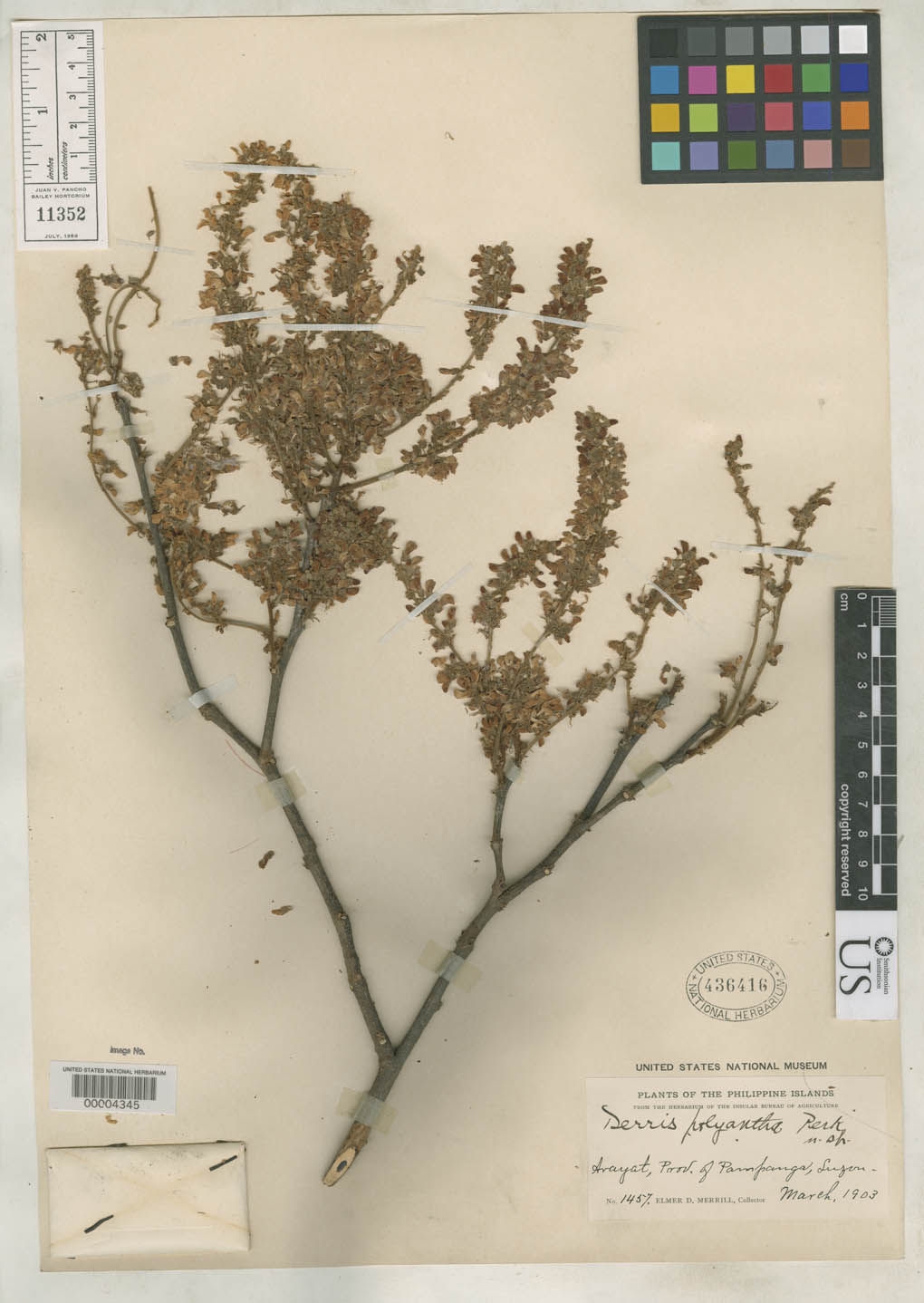| Citation |
|
Description |
Geographic Range [top]
Range Description: This species is endemic to the Philippines.
Countries occurrence:
Native:
Philippines
Additional data:
? Number of Locations: 3
? Lower elevation limit (metres): 5
? Upper elevation limit (metres): 500
Range Map: Click here to open the map viewer and explore range.
Population [top]
Population: No population data was available. The most recent specimen collection found is dated 1917. No new collections have been encountered (Madulid 2011).
Current Population Trend: Unknown
Additional data:
Habitat and Ecology [top]
Habitat and Ecology: This species is reported from thickets and secondary forest at low altitudes.
Systems: Terrestrial
Threats [top]
Major Threat(s): Habitat loss as a result of expanding human populations, for agriculture, forestry and infrastructure development, is the main threat to native vegetation in the Philippines. Decline in old-growth forest in the Philippines, from seventy per cent land cover to seven per cent (1997 estimate) in less than a century, is probably the most rapid and severe in the world (Heaney and Regaldo 2007). There has been clearance of natural habitats, for example, for coconut palm plantations and rice terraces, logging and large scale urban expansion. These threats are ongoing. Several sites, where this species has been collected in the past, are now within plantations or urban areas areas. This species has also been recorded from the Taal Volcano, which is an active volcanic zone and the location is fragile due to frequent minor volcanic eruptions and habitat destruction (Madulid 2011).
Conservation Actions [top]
Conservation Actions: This species may benefit from existing protected areas, for example the Mount Arayat and Taal volcano reserves. However, these locations are fragile due to frequent minor volcanic eruptions and habitat destruction (Madulid 2011). No ex-situ conservation measures are known. More information about the biology and ecology of this species, and its current habitat status and specific threats, would help to determine its conservation requirements. Further research is needed into the current population status and trends, and also the geographical distribution of this species, particularly since many of the records are from the late nineteenth and early twentieth century, and its continued presence is uncertain.
Citation: Chadburn, H. 2012. Derris polyantha. The IUCN Red List of Threatened Species 2012: e.T19892101A20061257. http://dx.doi.org/10.2305/IUCN.UK.2012.RLTS.T19892101A20061257.en. Downloaded on 05 December 2017.
Disclaimer: To make use of this information, please check the .
Feedback: If you see any errors or have any questions or suggestions on what is shown on this page, please provide us with feedback so that we can correct or extend the information provided
|

